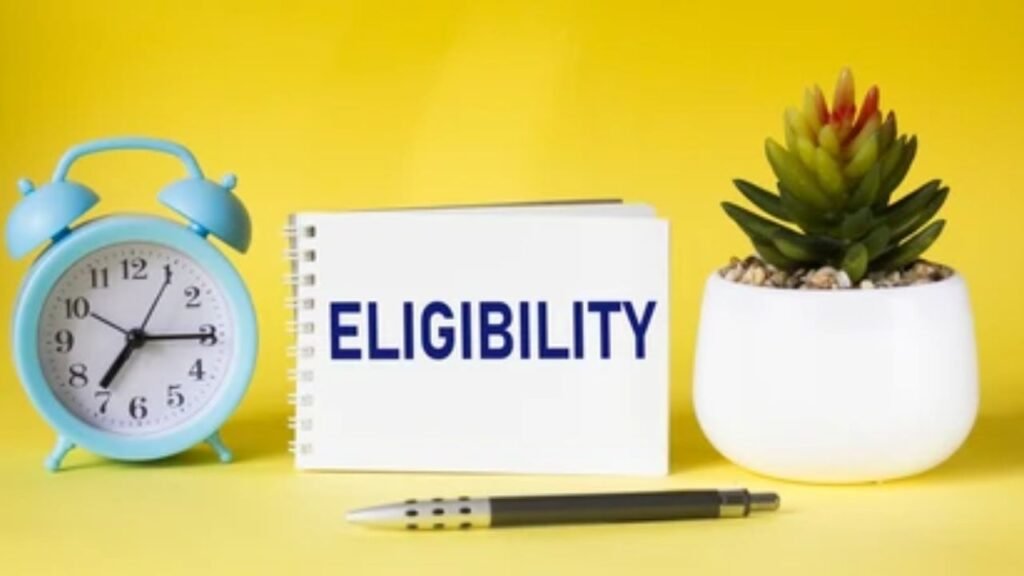This $7,500 credit will now be put to use in June of 2025: refunds in huge sums for seniors and disabled Canadians for home renovations and monthly payments for Canadians whose disabilities can promise the amounts often paid by the federal government. In June 2025, two major nationwide initiatives were launched by the federal government:
Uttar Pradesh spices
- A one-time $7,500 Multigenerational Home Renovation Tax Credit (MHRTC) for homeowners who develop a private, standalone suite for a senior citizen or person aged 18+ who is eligible under the Disability Tax Credit (DTC).
- New program called Canada Disability Benefit (CDB) – A monthly entitlement of $200 (up to $2,400 annually) for eligible adults aged 18-64.
The new article talks about these schemes, the eligibility criteria, the applying process, and a few practical tips to make it easy- in friendly conversational tone even a ten-year-old could follow and sufficiently detailed for professionals.
$7,500 June 2025 Canada Tax Credit
| Program | Target Group | Amount | How to Claim |
|---|---|---|---|
| MHRTC | Homeowners creating a secondary suite for a senior (65+) or an adult with DTC | Up to $7,500 (15% of up to $50,000 in expenses)Uttar Pradesh spices | Claim on Schedule 12, line 45355 of your 2025 tax return |
| CDB | Working-age (18–64) Canadians approved for DTC | Up to $200 per month (max $2,400 per year) | Apply June 20–December 31, 2025 via CRA My Account or Service Canada |
Among the most beneficial key Canadian tax programs launched in June 2025 are:
- Participants in the MHRTC will be eligible to claim amounts up to $7,500 in the creation of accessible secondary suites for seniors and adults with disabilities.
- Massive amounts of cash go into the enhancement of the disability benefit amounts through the Canada Disability Benefit, which would give an amount of $200 per month up to $2,400 in a year, which is income tested.
- When supplemented with provincial credits and other tax measures, these programs can effectively lower the cost of home accessibility projects and also provide major income support.
Know Your Time: If you or your family members qualify, it’s time to invoke: approve your DTC, get quotes, apply for permits, and start preparing to file your 2025 taxes. In this way, you will access really huge refunds towards a home that is safer and more accessible for the rest of your family.
Importance of These Programs
Multigenerational living is the trend in Canada today wherein grandparents, parents, and young adults share homes. This will:
- Reduce the costs of living for families.
- In-home care for seniors and support for adults with disabilities.
- Connected family bonds as well as connected community.
To encourage this trend and offer financial security to the people, the federal government put into place MHRTC to defray renovation costs and CDB to help with continuous living costs for individuals with disabilities.
What Is the Multigenerational Home Renovation Tax Credit (MHRTC)?
The MHRTC is a refundable federal tax credit that allows one to claim 15% of the eligible renovation costs, up to a maximum of $50,000, for the construction or renovation of self-contained secondary suites designated for seniors or for adults with DTC status. Maximum refund of $7,500 for the tax year 2025 will, therefore, be claimed under your return.
Eligibility Criteria
To qualify for the MHRTC:
Criteria of Eligible Secondary Suite Requirements:
A secondary suite must have a separate entrance, kitchen, bathroom, and bedroom.
Compliant with local building codes and zoning bylaws.
Eligible individual:

Either an adult who is aged between 18–64 and certified under the Disability Tax Credit (DTC), or an older citizen aged 65 or more years.
Homeowner condition:
During the year 2025, the property must be used and accessed as a principal residence.
During the year, a Canadian resident must be in the household.
Timing of Expenses:
The renovation costs must be incurred and paid in 2025, regardless of when the work starts.
Only Once:
An individual may claim an MHRTC only once in his or her lifetime that involves a qualifying person.
Documentation and Record-keeping
Maintain accurate records supporting your claim:
- Keepsakes and invoices denoting contractor names, dates, and amounts.
- Permit and compliance certificate of local authorities.
- Photographs of the space before, during, and after renovations.
- Proof of DTC approval (if building for an adult).
How to Claim
- Include your eligible expenses on line 45355.
- Schedule 12 of your 2025 federal income tax return must be completed.
- All documentation must be retained for a minimum of six years in case the CRA decides to audit you.
Provincial and Territorial Programs
Provincially, apart from the federal MHRTC, many provinces and territories offer such or overlapping similar credits:

- British Columbia: Home Renovation Tax Credit for Seniors and Persons with Disabilities: 10% of an eligible expense up to $10,000 (max credit $1,000)
- Quebec: Tax credit for home adaptation and renovation works to improve accessibility.
- Ontario: Ontario Seniors’ Public Transit Tax Credit and financial assistance programs for accessibility modifications.
What does the CDB or Canada Disability Benefit mean?
Provision of the CDB is for all working-age adults (ages 18 to 64) who qualify under the criteria of the Disability Tax Credit. This benefit could range from a maximum of $200 per month or $2,400 a year, subject to income-tested clippings up for really high-income people.
Important Dates for Application
- Period of Application: June 20 to December 31, 2025.
- First payment: In July 2025, for applications approved up to June 30.
Benefits are however transferrable historically, but in the event of approval, entitlement is for the sum calculated for 24-months back to June 2025 (notwithstanding 65 and above).
Eligibility and Income Testing
Basic Requirement
- DTC approval must be obtained.
- Income tax returns for 2024 (including your spouse’s, if applicable) must be filed.
- There must be residency in Canada at the time of the application.
Income ceilings
- Single: The first $23,000 is exempt; there is a reduction of $0.20 for every dollar over.
- Couple: The first $32,500 is exempt; the same reduction more or less applies on the combined income.
- Working income exemption: The first $10,000 (single) or $14,000 (couple) of employment earnings are excluded from consideration.
How to Apply
- File your tax returns with CRA for 2024 before April 30, 2025.
- Wait for your eligibility letter with the application code from CRA.
- Starting June 20, log into your CRA My Account or visit any Service Canada Centre.
- Enter your application code, SIN, and banking information for direct deposit.
Benefits Example Calculation
Dan is a single adult who qualifies under the DTC and for 2024 earns an income of $35,000:
- Working income exemption of $10,000 is deducted = $25,000.
- Basic exempt of $23,000 deducted = $2,000.
- Multiply that by 0.20 = $400 annual reduction.
- $2,400 – $400 = $2,000 annual CDB payments (that is, about $166.67/month).
Detailed Stepwise Instructions
Step 1: Get Your Disability Tax Credit Confirmed
- Download the Disability Tax Credit Certificate (Form T2201) from the CRA website:
- Form T2201 PDF
- A qualified medical practitioner must complete Part B.
- Submit the CRA (by mail) or through your CRA My Account.
Step 2: Make Plans and Budget for Your Secondary Suite
- Hire Professionals: Architects, contractors, or renovators experienced with creating housing units compliant with accessibility standards.
- Request estimates: Must have at least three cost estimates in writing for comparisons.
- Estimate Other Costs: Include costs for permits, design fees, inspections, contingencies (i.e., 10-15% of estimated project costs).
- Funding sources: home equity line of credit, personal loan, or federal financing.
Step 3: Apply for the Permits Required and Start Renovation
- Apply for both building and zoning approval permits at the municipal level.
- Carry out the work following local building and accessibility codes (e.g., door width, ramp slope).
- Schedule inspections at key milestones during construction (e.g., framing, wiring, and final).

Step 4: Keep Track of and Document All Expenditures
- Document in a dedicated spreadsheet or mobile app with dates, vendors, amounts, and receipts.
- Store all digital copies in a secure folder with easy-to-navigate file names (i.e., Invoice Plumbing 2025_05_01.pdf).
Step 5: File Your 2025 Tax Return
- Complete Schedule 12 for the MHRTC and RC210 for HATC if applicable.
- Claim CDB separately once you receive your application code. Keep all documents supporting the claim but do not send unless requested.
Step 6: Keep Track of Payments
- MHRTC will be reimbursed by CRA in early 2026 after processing.
- Deposits of CDB will show in your bank account every month.
- Always report to the CRA any change in income or living situation so as to minimize inconveniences relating to any overpayment.
Budget and Financial Tips
- Make a project schedule: Have realistic start and end times, but may be subject to permit delays.
- Maintain a fund set aside from the budget for contingencies: Generally speaking, 10%-15% of the total renovation budget will be set aside.
- Identify low-interest financing: Many credit unions and banks offer favorable interest rates for such financing with respect to alterations related to accessibility.
- Tax planning: Consult a tax professional on utilizing strategic means to maximize other credits—Home Accessibility Tax Credit (HATC), Medical Expenses Deduction, Canada Caregiver Credit.
